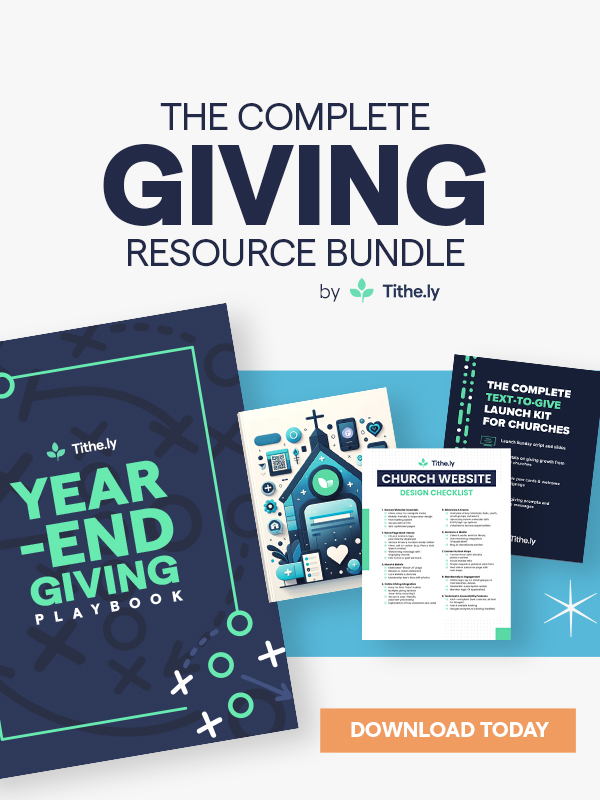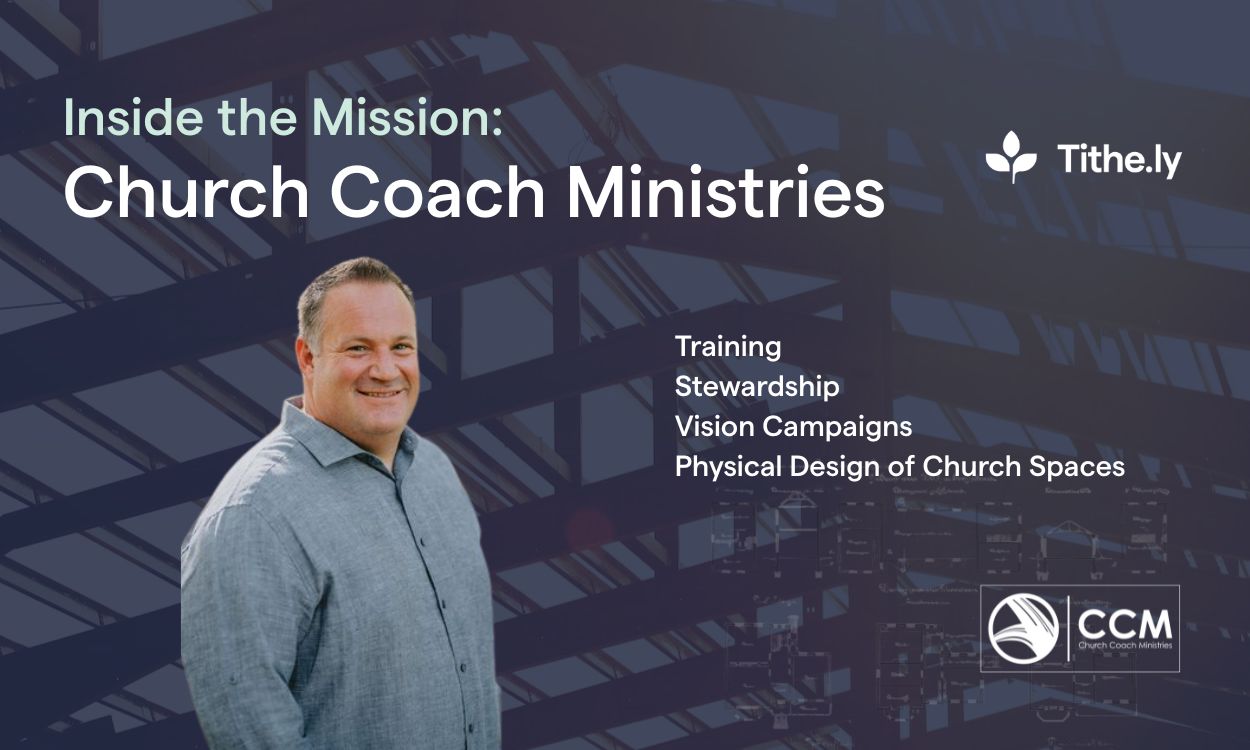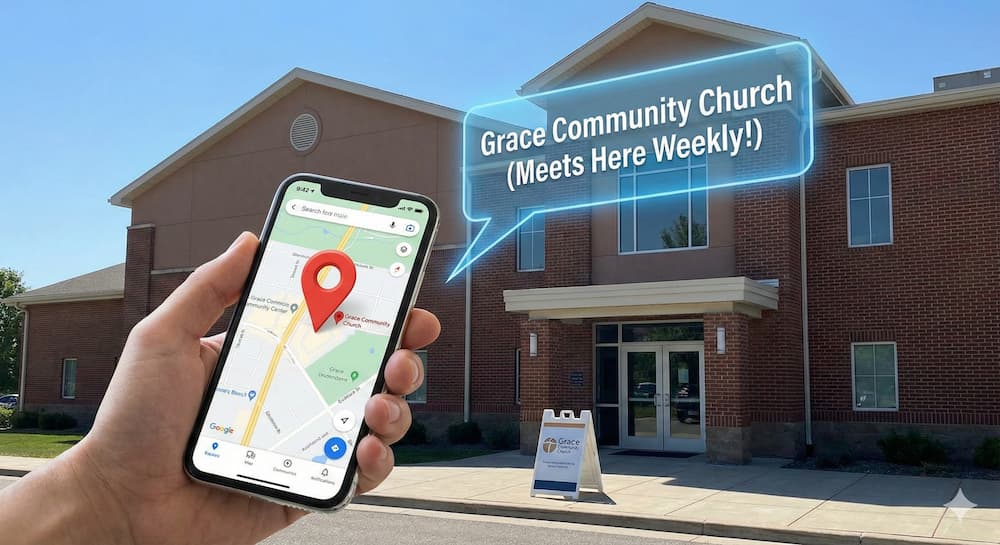7 Church Newsletters People Love Getting in Their Inboxes
Does no one read your church newsletter? Increase your open rates and engagement with these must-know examples..

Your church newsletter makes a big difference to your church members.
It can make or break your virtual relationship with your congregants.
On one hand, if you implement the best newsletter practices, you can give your congregation a point of contact with the local body of Christ that they eagerly await to open each week.
On the other hand, if you don’t implement the best practices, your newsletter will be another email they delete from their spam box once a week in disappointment.
Here, we’re going to outline four of the best practices for church newsletters and seven examples your church will love to receive in their inbox.
Let’s dig in!
3 must-know tips for church newsletters
Here are three must-know tips:
#1. When to send a newsletter
23% of emails are opened within 60 minutes after being sent.
Data from Mailchimp indicates that the best time to increase this number and take advantage of optimal newsletter opening times are Tuesday and Thursday morning between, 6am and 8am EST.
#2. Segmenting communication methods
There are other forms of notification that have a much higher response rate than email, such as push notifications and mass text messages. For example, 95% of text messages are read by their recipients within 24 hours.
However, the downside of these forms of communication is that they only offer small amounts of information. Moreover, it’s much easier to violate a user’s sense of trust if you overuse text messaging or push notifications and increase the risk that they may unsubscribe.
Therefore, newsletters are a uniquely effective communication method of sending a large amount of information to a large amount of people.
#3 Hosting your newsletter on your church website
One way to integrate these three kinds of communication is to post your church newsletter on your church website as well as sending it out via email.
Then, you can send a text message or push notification to those on your list who have opted into the newsletter with a link to the post that says: “Check out how to get involved at [CHURCH NAME] this week: [LINK]”
With this method, you can actually turn your newsletter into a church magazine, and turn church magazine ideas into newsletter feature pieces to encourage and engage your church throughout the week.
7 church newsletter examples
Knowing the best practices aren’t enough.
You also have to know what types of emails you should send.
Don’t sweat it.
We’ve got you covered here.
#1 Weekly newsletter
Your weekly newsletter should include several staples that keep people engaged and coming back each week, such as:
- Prayer requests
- Ministry updates
- Service details
- Volunteer opportunities
- Sermon information
- Online giving information
- Event registration details
Since this is the email going to your entire church audience, it is appropriate to have multiple pieces of unrelated information, because multiple different segments within your church community will be looking for information relevant to them, and it doesn’t make sense to send eight different emails to overlapping lists of church members.
Give yourself permission to make this weekly newsletter a version of your church bulletin so that people don’t feel the pressure to digest all of the new church information in their bulletin each week during the service.
#2 Holiday newsletter
The holiday newsletter is a fantastic opportunity to give your audience resources for a specific holiday season.
This can include:
- Ways to prepare for the holiday season
- The sermon series
- The Bible reading plan
- Marketing assets to help members invite family and friends
- What that specific holiday season spiritually means
This will be a more consolidated email than your weekly church newsletter, and it should be a separate email entirely. If you try to combine the holiday newsletter into the weekly newsletter, the holiday information will likely be lost underneath the mound of logistical information everyone will still be looking for.
Send this newsletter out at least one month before the season so that people can prepare, download marketing resources, share them on social media, and invite family and friends in time. To this end, it may be appropriate to send out a second email 1-2 weeks before the holiday season with the same information in order to remind them.
#3 Church fundraising newsletter
A church fundraising newsletter is for the purpose of highlighting a specific need in the church, whether that be a building fund, new missionary, VBS fund, or special ministry outreach project in which the church can participate.
People are often eager and willing to participate in opportunities to give to the church’s work in the community, and therefore would prefer that information to be separate from the church’s weekly newsletter as well.
#4 Special events newsletter
A special event in your church may be a BBQ, concert, prayer event, guest speaker, ministry meal, or outreach opportunity.
This special events newsletter is unique, because you may need to include a form that enables readers to enter their payment information to register for an event which, if you are using Tithe.ly Sites, easily syncs with the Tithe.ly Events system to create a seamless newsletter-to-registration experience for your users.
#5 Urgent need newsletter
The urgent need newsletter should be rare and have a single call to action:
“Give,” “Volunteer,” etc.
That action should direct users to a single and simple form page that enables them to easily take the requested action in a matter of seconds.
#6 Staff update newsletter
The church staff update newsletter is another rare, but important newsletter that indicates to the community when new staff have been hired.
At a larger church, this newsletter is less necessary. But for a smaller church that has less than 10 staff, these changes represent a change of the faces they see every Sunday, and it gives them the opportunity to read more about the new hire, acquaint themselves with their background, and welcome them accordingly.
In this regard, it is appropriate to direct readers to an action that enables them to show their support for the new hire in some material way, either by sending them a welcome email, or by donating to a welcome gift fund that can have the reader’s name on a card.
#7 Emergency events newsletter
Occasionally, emergency events require churches to send out newsletters to their congregations that inform them of new procedures, times, locations, or staff that have been affected.
Many churches were required to send out these emergency events newsletters during the COVID-19 pandemic and as they prepare to reopen their church.
But churches in snowy climates are used to sending out these emails when the weather is bad, and churches in hurricane zones often must send out these emails in order to accommodate for the realities of 100mph winds making it impossible to hold in-person Sunday services.
Over to you
Use these seven kinds of church newsletters in your communication strategy to balance your digital relationship with your church. If you do, you will prevent people from being both overwhelmed by emailed information and under-informed due to an overly compacted weekly newsletter.
Your best technological option for pulling off this feat in a single sign-on system is Tithe.ly All Access, which bundles together your church app, website, church management system, and event registration all with a single log-in.
Sign Up for Product Updates
Your church newsletter makes a big difference to your church members.
It can make or break your virtual relationship with your congregants.
On one hand, if you implement the best newsletter practices, you can give your congregation a point of contact with the local body of Christ that they eagerly await to open each week.
On the other hand, if you don’t implement the best practices, your newsletter will be another email they delete from their spam box once a week in disappointment.
Here, we’re going to outline four of the best practices for church newsletters and seven examples your church will love to receive in their inbox.
Let’s dig in!
3 must-know tips for church newsletters
Here are three must-know tips:
#1. When to send a newsletter
23% of emails are opened within 60 minutes after being sent.
Data from Mailchimp indicates that the best time to increase this number and take advantage of optimal newsletter opening times are Tuesday and Thursday morning between, 6am and 8am EST.
#2. Segmenting communication methods
There are other forms of notification that have a much higher response rate than email, such as push notifications and mass text messages. For example, 95% of text messages are read by their recipients within 24 hours.
However, the downside of these forms of communication is that they only offer small amounts of information. Moreover, it’s much easier to violate a user’s sense of trust if you overuse text messaging or push notifications and increase the risk that they may unsubscribe.
Therefore, newsletters are a uniquely effective communication method of sending a large amount of information to a large amount of people.
#3 Hosting your newsletter on your church website
One way to integrate these three kinds of communication is to post your church newsletter on your church website as well as sending it out via email.
Then, you can send a text message or push notification to those on your list who have opted into the newsletter with a link to the post that says: “Check out how to get involved at [CHURCH NAME] this week: [LINK]”
With this method, you can actually turn your newsletter into a church magazine, and turn church magazine ideas into newsletter feature pieces to encourage and engage your church throughout the week.
7 church newsletter examples
Knowing the best practices aren’t enough.
You also have to know what types of emails you should send.
Don’t sweat it.
We’ve got you covered here.
#1 Weekly newsletter
Your weekly newsletter should include several staples that keep people engaged and coming back each week, such as:
- Prayer requests
- Ministry updates
- Service details
- Volunteer opportunities
- Sermon information
- Online giving information
- Event registration details
Since this is the email going to your entire church audience, it is appropriate to have multiple pieces of unrelated information, because multiple different segments within your church community will be looking for information relevant to them, and it doesn’t make sense to send eight different emails to overlapping lists of church members.
Give yourself permission to make this weekly newsletter a version of your church bulletin so that people don’t feel the pressure to digest all of the new church information in their bulletin each week during the service.
#2 Holiday newsletter
The holiday newsletter is a fantastic opportunity to give your audience resources for a specific holiday season.
This can include:
- Ways to prepare for the holiday season
- The sermon series
- The Bible reading plan
- Marketing assets to help members invite family and friends
- What that specific holiday season spiritually means
This will be a more consolidated email than your weekly church newsletter, and it should be a separate email entirely. If you try to combine the holiday newsletter into the weekly newsletter, the holiday information will likely be lost underneath the mound of logistical information everyone will still be looking for.
Send this newsletter out at least one month before the season so that people can prepare, download marketing resources, share them on social media, and invite family and friends in time. To this end, it may be appropriate to send out a second email 1-2 weeks before the holiday season with the same information in order to remind them.
#3 Church fundraising newsletter
A church fundraising newsletter is for the purpose of highlighting a specific need in the church, whether that be a building fund, new missionary, VBS fund, or special ministry outreach project in which the church can participate.
People are often eager and willing to participate in opportunities to give to the church’s work in the community, and therefore would prefer that information to be separate from the church’s weekly newsletter as well.
#4 Special events newsletter
A special event in your church may be a BBQ, concert, prayer event, guest speaker, ministry meal, or outreach opportunity.
This special events newsletter is unique, because you may need to include a form that enables readers to enter their payment information to register for an event which, if you are using Tithe.ly Sites, easily syncs with the Tithe.ly Events system to create a seamless newsletter-to-registration experience for your users.
#5 Urgent need newsletter
The urgent need newsletter should be rare and have a single call to action:
“Give,” “Volunteer,” etc.
That action should direct users to a single and simple form page that enables them to easily take the requested action in a matter of seconds.
#6 Staff update newsletter
The church staff update newsletter is another rare, but important newsletter that indicates to the community when new staff have been hired.
At a larger church, this newsletter is less necessary. But for a smaller church that has less than 10 staff, these changes represent a change of the faces they see every Sunday, and it gives them the opportunity to read more about the new hire, acquaint themselves with their background, and welcome them accordingly.
In this regard, it is appropriate to direct readers to an action that enables them to show their support for the new hire in some material way, either by sending them a welcome email, or by donating to a welcome gift fund that can have the reader’s name on a card.
#7 Emergency events newsletter
Occasionally, emergency events require churches to send out newsletters to their congregations that inform them of new procedures, times, locations, or staff that have been affected.
Many churches were required to send out these emergency events newsletters during the COVID-19 pandemic and as they prepare to reopen their church.
But churches in snowy climates are used to sending out these emails when the weather is bad, and churches in hurricane zones often must send out these emails in order to accommodate for the realities of 100mph winds making it impossible to hold in-person Sunday services.
Over to you
Use these seven kinds of church newsletters in your communication strategy to balance your digital relationship with your church. If you do, you will prevent people from being both overwhelmed by emailed information and under-informed due to an overly compacted weekly newsletter.
Your best technological option for pulling off this feat in a single sign-on system is Tithe.ly All Access, which bundles together your church app, website, church management system, and event registration all with a single log-in.
podcast transcript
Your church newsletter makes a big difference to your church members.
It can make or break your virtual relationship with your congregants.
On one hand, if you implement the best newsletter practices, you can give your congregation a point of contact with the local body of Christ that they eagerly await to open each week.
On the other hand, if you don’t implement the best practices, your newsletter will be another email they delete from their spam box once a week in disappointment.
Here, we’re going to outline four of the best practices for church newsletters and seven examples your church will love to receive in their inbox.
Let’s dig in!
3 must-know tips for church newsletters
Here are three must-know tips:
#1. When to send a newsletter
23% of emails are opened within 60 minutes after being sent.
Data from Mailchimp indicates that the best time to increase this number and take advantage of optimal newsletter opening times are Tuesday and Thursday morning between, 6am and 8am EST.
#2. Segmenting communication methods
There are other forms of notification that have a much higher response rate than email, such as push notifications and mass text messages. For example, 95% of text messages are read by their recipients within 24 hours.
However, the downside of these forms of communication is that they only offer small amounts of information. Moreover, it’s much easier to violate a user’s sense of trust if you overuse text messaging or push notifications and increase the risk that they may unsubscribe.
Therefore, newsletters are a uniquely effective communication method of sending a large amount of information to a large amount of people.
#3 Hosting your newsletter on your church website
One way to integrate these three kinds of communication is to post your church newsletter on your church website as well as sending it out via email.
Then, you can send a text message or push notification to those on your list who have opted into the newsletter with a link to the post that says: “Check out how to get involved at [CHURCH NAME] this week: [LINK]”
With this method, you can actually turn your newsletter into a church magazine, and turn church magazine ideas into newsletter feature pieces to encourage and engage your church throughout the week.
7 church newsletter examples
Knowing the best practices aren’t enough.
You also have to know what types of emails you should send.
Don’t sweat it.
We’ve got you covered here.
#1 Weekly newsletter
Your weekly newsletter should include several staples that keep people engaged and coming back each week, such as:
- Prayer requests
- Ministry updates
- Service details
- Volunteer opportunities
- Sermon information
- Online giving information
- Event registration details
Since this is the email going to your entire church audience, it is appropriate to have multiple pieces of unrelated information, because multiple different segments within your church community will be looking for information relevant to them, and it doesn’t make sense to send eight different emails to overlapping lists of church members.
Give yourself permission to make this weekly newsletter a version of your church bulletin so that people don’t feel the pressure to digest all of the new church information in their bulletin each week during the service.
#2 Holiday newsletter
The holiday newsletter is a fantastic opportunity to give your audience resources for a specific holiday season.
This can include:
- Ways to prepare for the holiday season
- The sermon series
- The Bible reading plan
- Marketing assets to help members invite family and friends
- What that specific holiday season spiritually means
This will be a more consolidated email than your weekly church newsletter, and it should be a separate email entirely. If you try to combine the holiday newsletter into the weekly newsletter, the holiday information will likely be lost underneath the mound of logistical information everyone will still be looking for.
Send this newsletter out at least one month before the season so that people can prepare, download marketing resources, share them on social media, and invite family and friends in time. To this end, it may be appropriate to send out a second email 1-2 weeks before the holiday season with the same information in order to remind them.
#3 Church fundraising newsletter
A church fundraising newsletter is for the purpose of highlighting a specific need in the church, whether that be a building fund, new missionary, VBS fund, or special ministry outreach project in which the church can participate.
People are often eager and willing to participate in opportunities to give to the church’s work in the community, and therefore would prefer that information to be separate from the church’s weekly newsletter as well.
#4 Special events newsletter
A special event in your church may be a BBQ, concert, prayer event, guest speaker, ministry meal, or outreach opportunity.
This special events newsletter is unique, because you may need to include a form that enables readers to enter their payment information to register for an event which, if you are using Tithe.ly Sites, easily syncs with the Tithe.ly Events system to create a seamless newsletter-to-registration experience for your users.
#5 Urgent need newsletter
The urgent need newsletter should be rare and have a single call to action:
“Give,” “Volunteer,” etc.
That action should direct users to a single and simple form page that enables them to easily take the requested action in a matter of seconds.
#6 Staff update newsletter
The church staff update newsletter is another rare, but important newsletter that indicates to the community when new staff have been hired.
At a larger church, this newsletter is less necessary. But for a smaller church that has less than 10 staff, these changes represent a change of the faces they see every Sunday, and it gives them the opportunity to read more about the new hire, acquaint themselves with their background, and welcome them accordingly.
In this regard, it is appropriate to direct readers to an action that enables them to show their support for the new hire in some material way, either by sending them a welcome email, or by donating to a welcome gift fund that can have the reader’s name on a card.
#7 Emergency events newsletter
Occasionally, emergency events require churches to send out newsletters to their congregations that inform them of new procedures, times, locations, or staff that have been affected.
Many churches were required to send out these emergency events newsletters during the COVID-19 pandemic and as they prepare to reopen their church.
But churches in snowy climates are used to sending out these emails when the weather is bad, and churches in hurricane zones often must send out these emails in order to accommodate for the realities of 100mph winds making it impossible to hold in-person Sunday services.
Over to you
Use these seven kinds of church newsletters in your communication strategy to balance your digital relationship with your church. If you do, you will prevent people from being both overwhelmed by emailed information and under-informed due to an overly compacted weekly newsletter.
Your best technological option for pulling off this feat in a single sign-on system is Tithe.ly All Access, which bundles together your church app, website, church management system, and event registration all with a single log-in.
VIDEO transcript
Your church newsletter makes a big difference to your church members.
It can make or break your virtual relationship with your congregants.
On one hand, if you implement the best newsletter practices, you can give your congregation a point of contact with the local body of Christ that they eagerly await to open each week.
On the other hand, if you don’t implement the best practices, your newsletter will be another email they delete from their spam box once a week in disappointment.
Here, we’re going to outline four of the best practices for church newsletters and seven examples your church will love to receive in their inbox.
Let’s dig in!
3 must-know tips for church newsletters
Here are three must-know tips:
#1. When to send a newsletter
23% of emails are opened within 60 minutes after being sent.
Data from Mailchimp indicates that the best time to increase this number and take advantage of optimal newsletter opening times are Tuesday and Thursday morning between, 6am and 8am EST.
#2. Segmenting communication methods
There are other forms of notification that have a much higher response rate than email, such as push notifications and mass text messages. For example, 95% of text messages are read by their recipients within 24 hours.
However, the downside of these forms of communication is that they only offer small amounts of information. Moreover, it’s much easier to violate a user’s sense of trust if you overuse text messaging or push notifications and increase the risk that they may unsubscribe.
Therefore, newsletters are a uniquely effective communication method of sending a large amount of information to a large amount of people.
#3 Hosting your newsletter on your church website
One way to integrate these three kinds of communication is to post your church newsletter on your church website as well as sending it out via email.
Then, you can send a text message or push notification to those on your list who have opted into the newsletter with a link to the post that says: “Check out how to get involved at [CHURCH NAME] this week: [LINK]”
With this method, you can actually turn your newsletter into a church magazine, and turn church magazine ideas into newsletter feature pieces to encourage and engage your church throughout the week.
7 church newsletter examples
Knowing the best practices aren’t enough.
You also have to know what types of emails you should send.
Don’t sweat it.
We’ve got you covered here.
#1 Weekly newsletter
Your weekly newsletter should include several staples that keep people engaged and coming back each week, such as:
- Prayer requests
- Ministry updates
- Service details
- Volunteer opportunities
- Sermon information
- Online giving information
- Event registration details
Since this is the email going to your entire church audience, it is appropriate to have multiple pieces of unrelated information, because multiple different segments within your church community will be looking for information relevant to them, and it doesn’t make sense to send eight different emails to overlapping lists of church members.
Give yourself permission to make this weekly newsletter a version of your church bulletin so that people don’t feel the pressure to digest all of the new church information in their bulletin each week during the service.
#2 Holiday newsletter
The holiday newsletter is a fantastic opportunity to give your audience resources for a specific holiday season.
This can include:
- Ways to prepare for the holiday season
- The sermon series
- The Bible reading plan
- Marketing assets to help members invite family and friends
- What that specific holiday season spiritually means
This will be a more consolidated email than your weekly church newsletter, and it should be a separate email entirely. If you try to combine the holiday newsletter into the weekly newsletter, the holiday information will likely be lost underneath the mound of logistical information everyone will still be looking for.
Send this newsletter out at least one month before the season so that people can prepare, download marketing resources, share them on social media, and invite family and friends in time. To this end, it may be appropriate to send out a second email 1-2 weeks before the holiday season with the same information in order to remind them.
#3 Church fundraising newsletter
A church fundraising newsletter is for the purpose of highlighting a specific need in the church, whether that be a building fund, new missionary, VBS fund, or special ministry outreach project in which the church can participate.
People are often eager and willing to participate in opportunities to give to the church’s work in the community, and therefore would prefer that information to be separate from the church’s weekly newsletter as well.
#4 Special events newsletter
A special event in your church may be a BBQ, concert, prayer event, guest speaker, ministry meal, or outreach opportunity.
This special events newsletter is unique, because you may need to include a form that enables readers to enter their payment information to register for an event which, if you are using Tithe.ly Sites, easily syncs with the Tithe.ly Events system to create a seamless newsletter-to-registration experience for your users.
#5 Urgent need newsletter
The urgent need newsletter should be rare and have a single call to action:
“Give,” “Volunteer,” etc.
That action should direct users to a single and simple form page that enables them to easily take the requested action in a matter of seconds.
#6 Staff update newsletter
The church staff update newsletter is another rare, but important newsletter that indicates to the community when new staff have been hired.
At a larger church, this newsletter is less necessary. But for a smaller church that has less than 10 staff, these changes represent a change of the faces they see every Sunday, and it gives them the opportunity to read more about the new hire, acquaint themselves with their background, and welcome them accordingly.
In this regard, it is appropriate to direct readers to an action that enables them to show their support for the new hire in some material way, either by sending them a welcome email, or by donating to a welcome gift fund that can have the reader’s name on a card.
#7 Emergency events newsletter
Occasionally, emergency events require churches to send out newsletters to their congregations that inform them of new procedures, times, locations, or staff that have been affected.
Many churches were required to send out these emergency events newsletters during the COVID-19 pandemic and as they prepare to reopen their church.
But churches in snowy climates are used to sending out these emails when the weather is bad, and churches in hurricane zones often must send out these emails in order to accommodate for the realities of 100mph winds making it impossible to hold in-person Sunday services.
Over to you
Use these seven kinds of church newsletters in your communication strategy to balance your digital relationship with your church. If you do, you will prevent people from being both overwhelmed by emailed information and under-informed due to an overly compacted weekly newsletter.
Your best technological option for pulling off this feat in a single sign-on system is Tithe.ly All Access, which bundles together your church app, website, church management system, and event registration all with a single log-in.


















.jpg)









